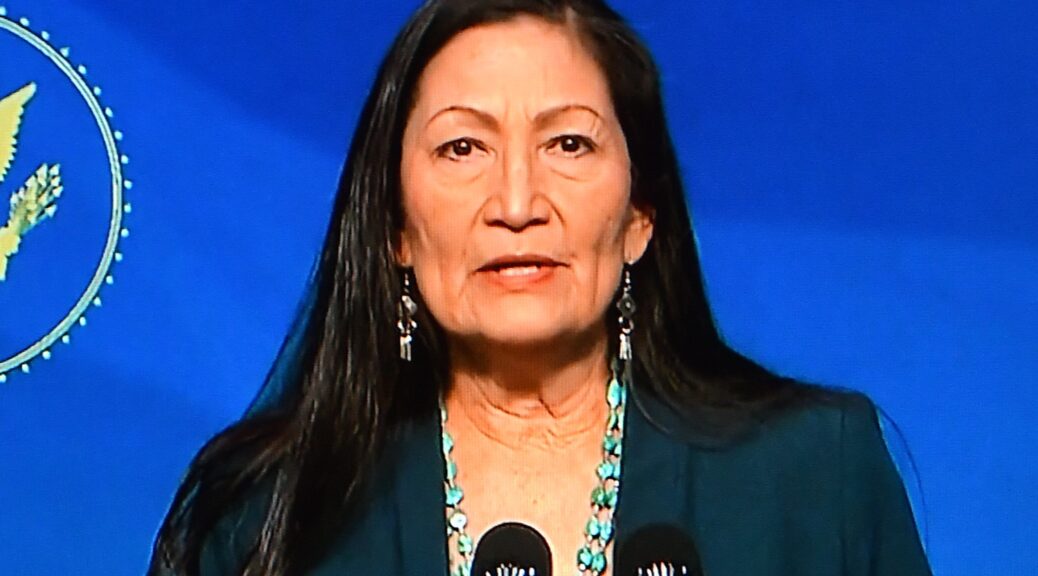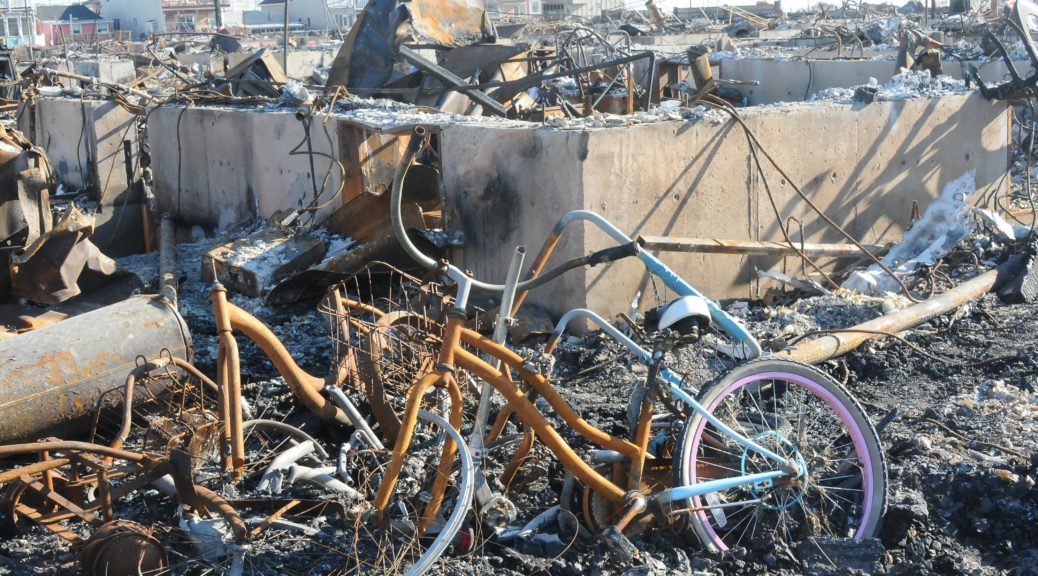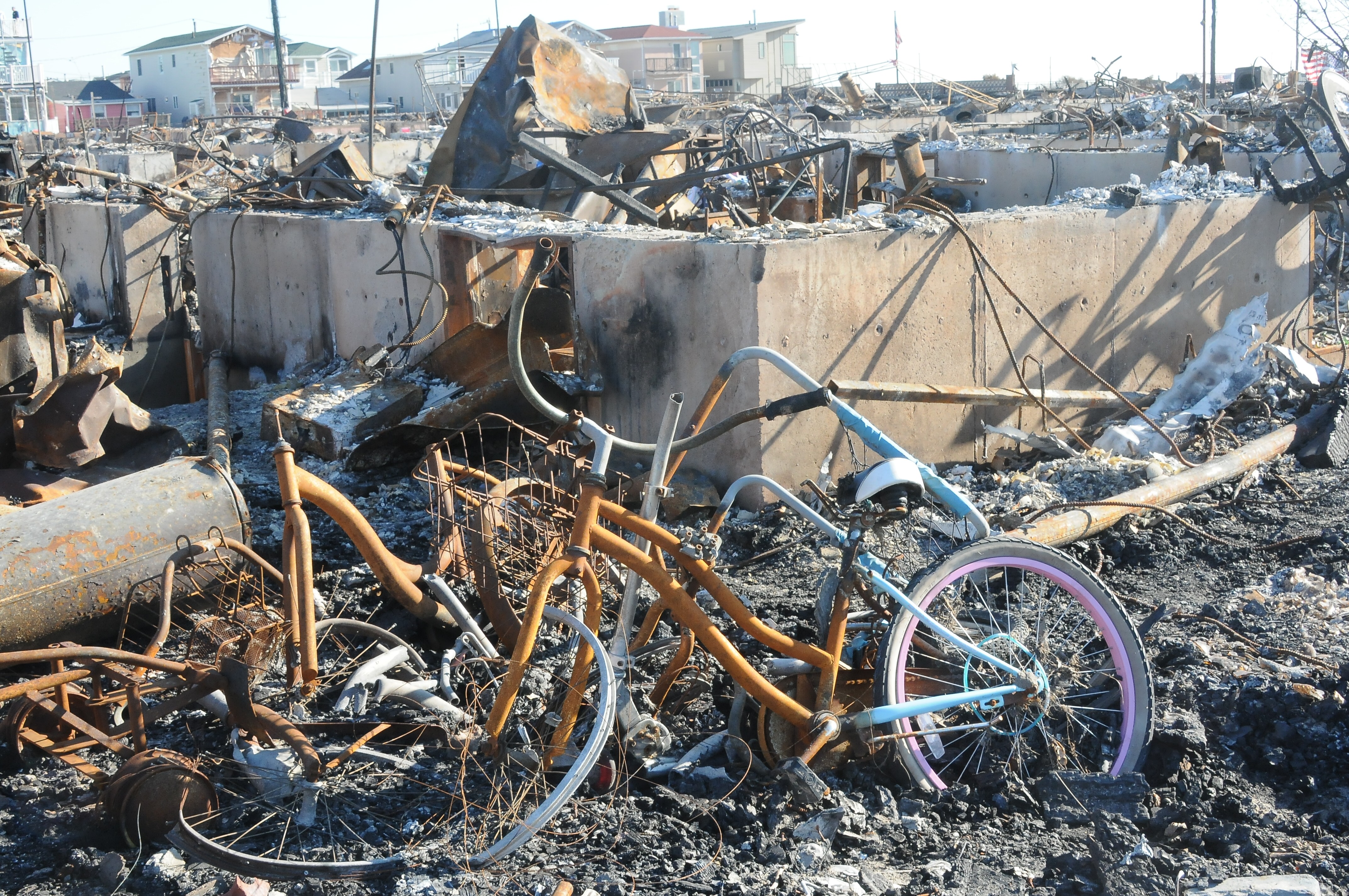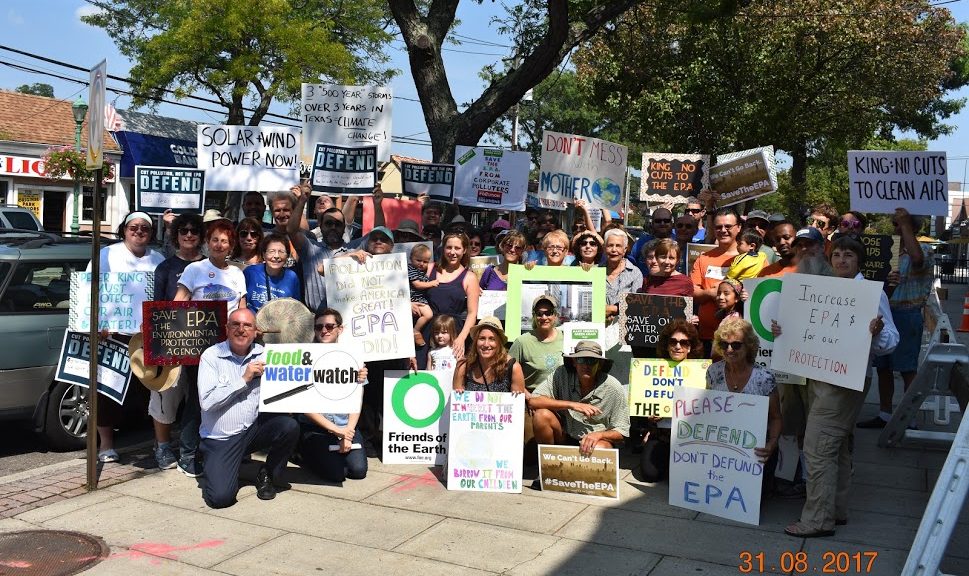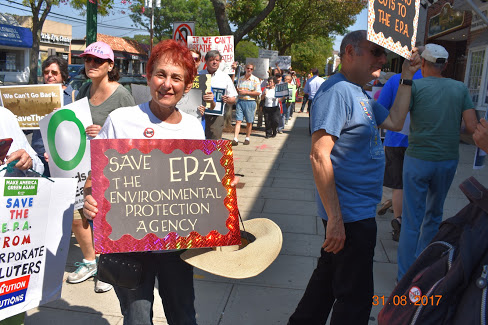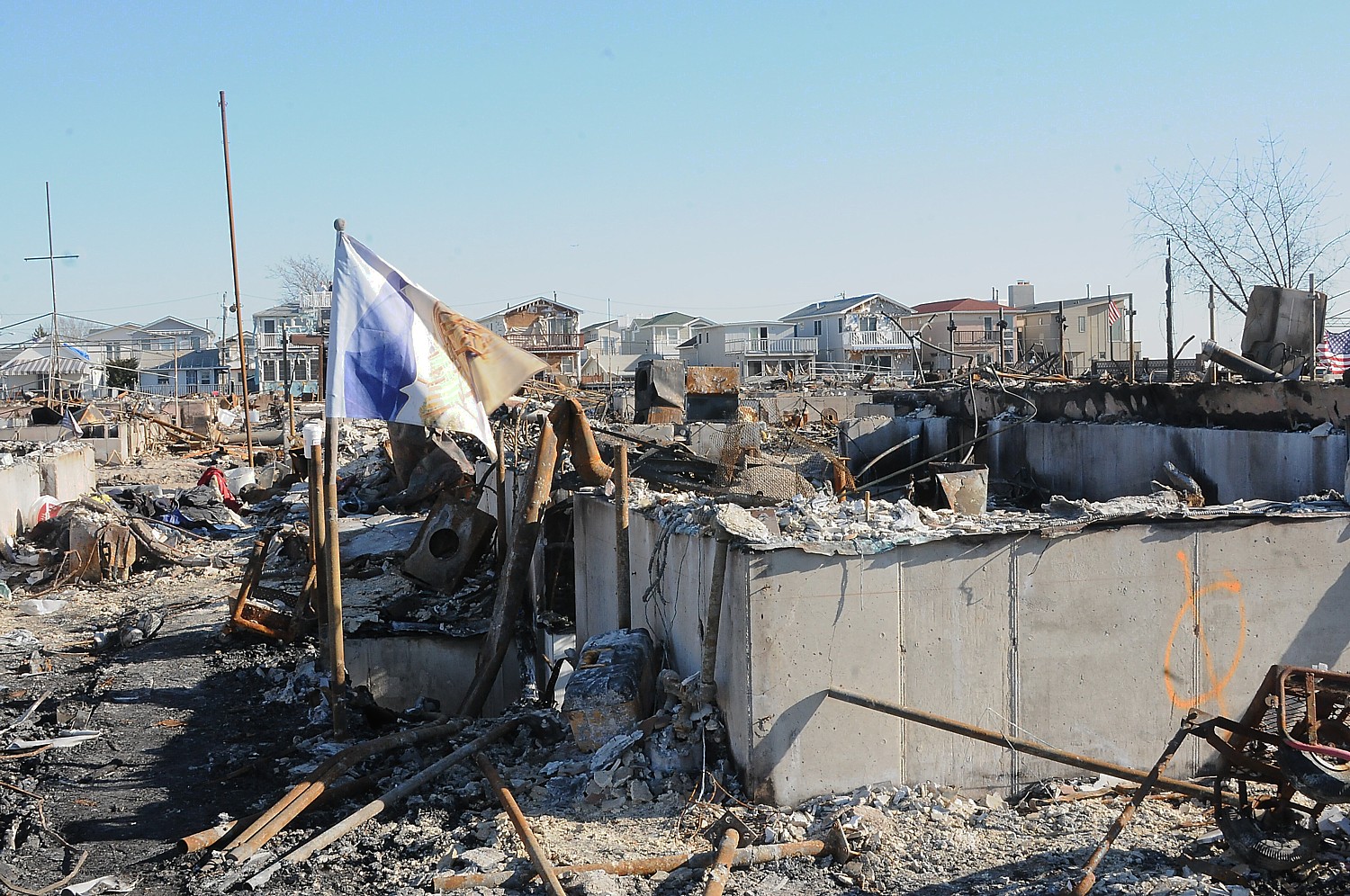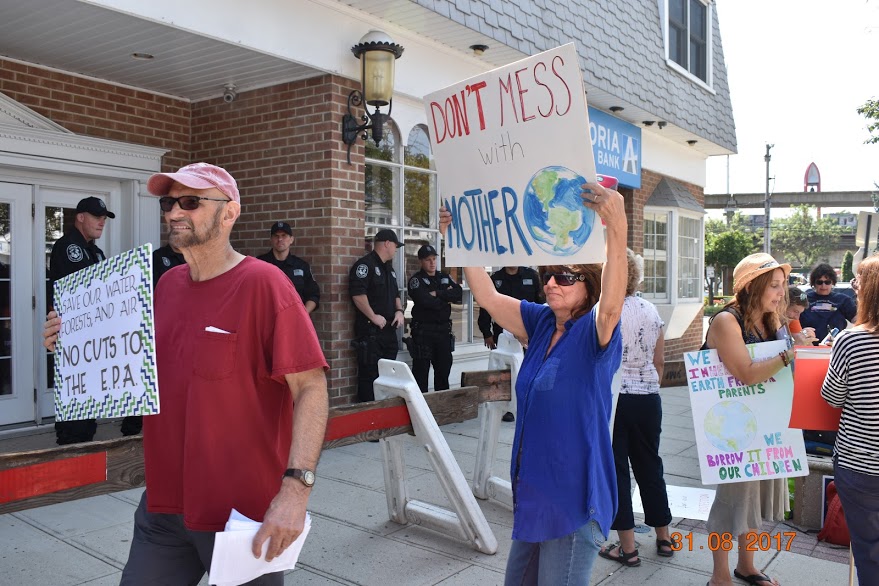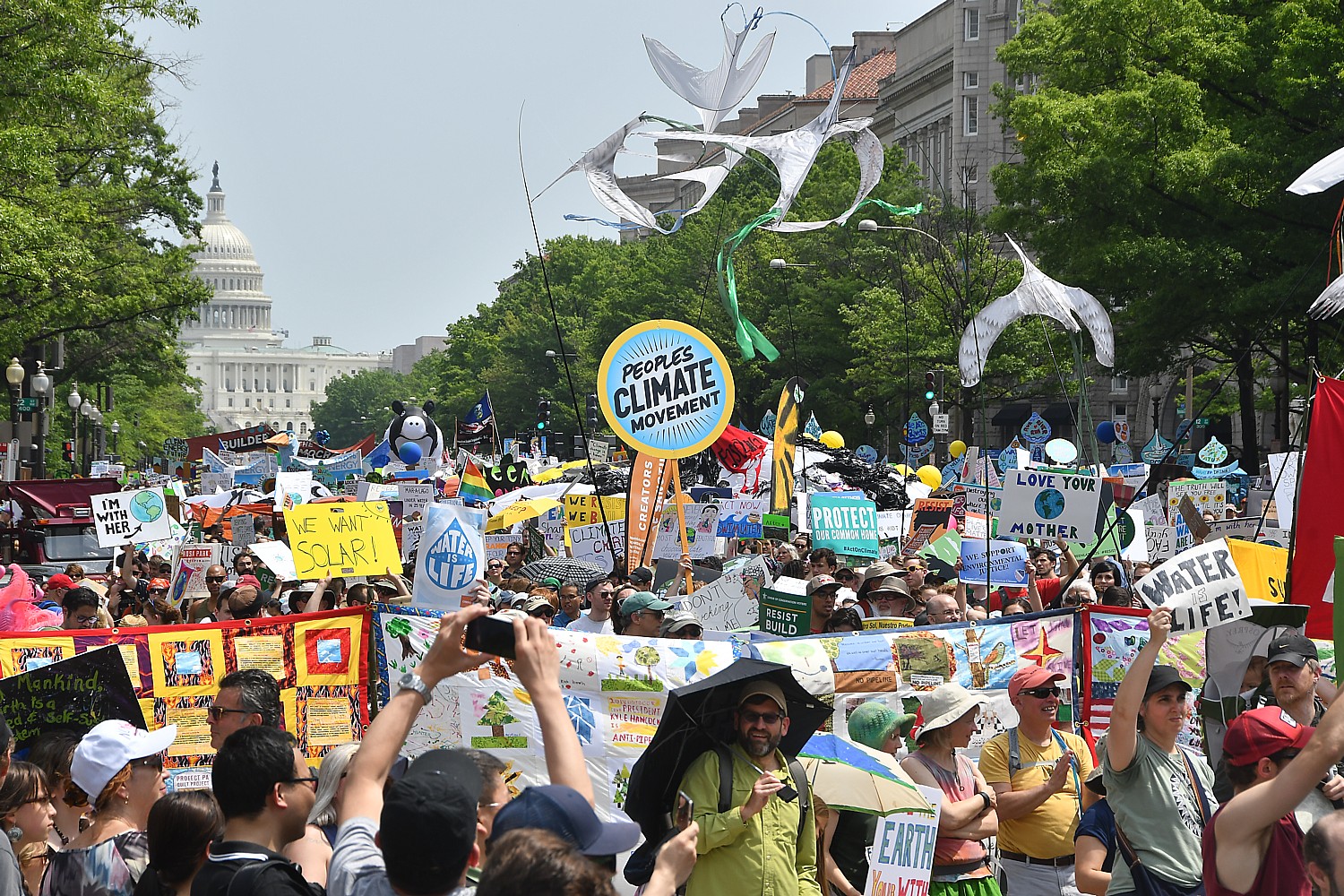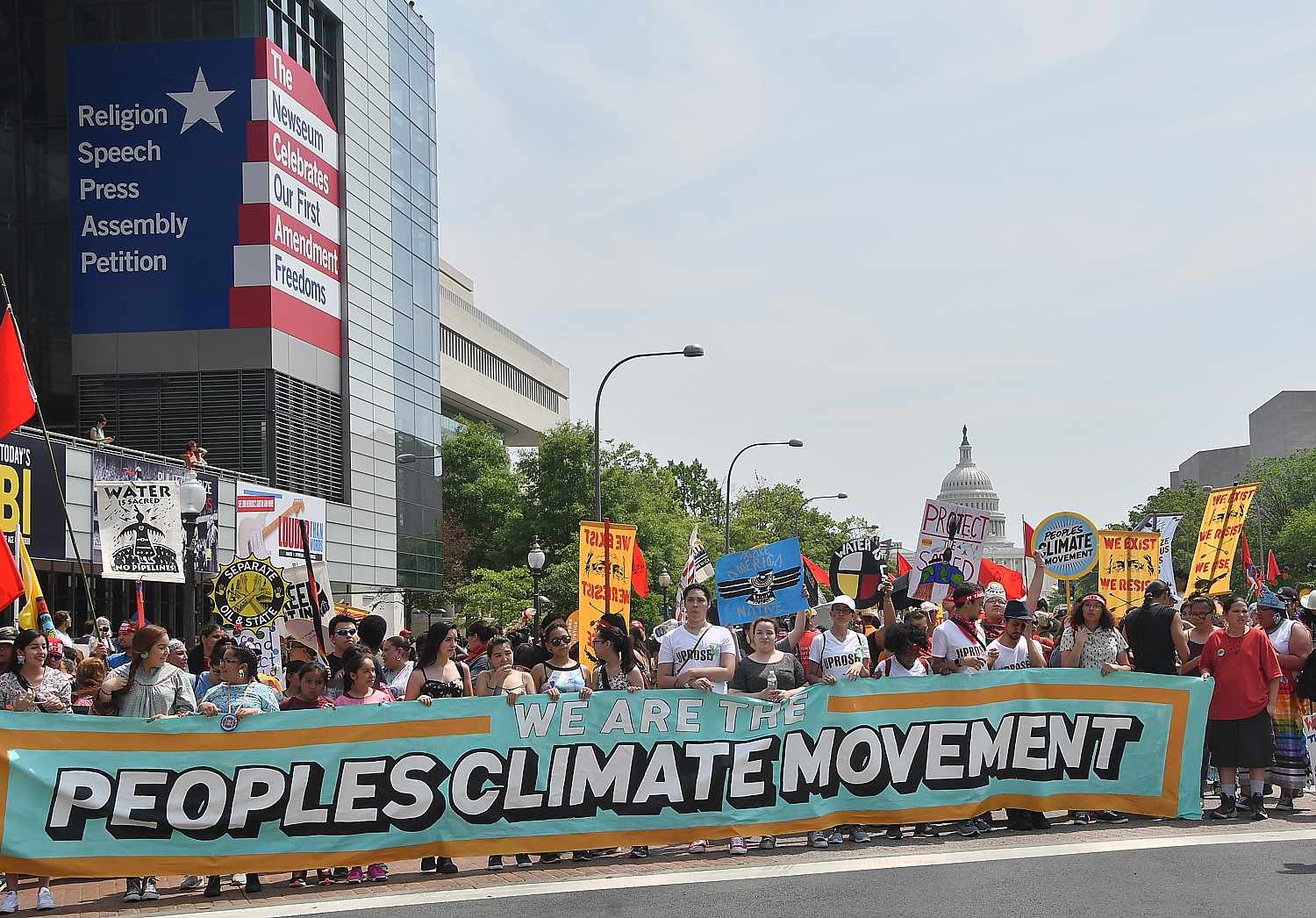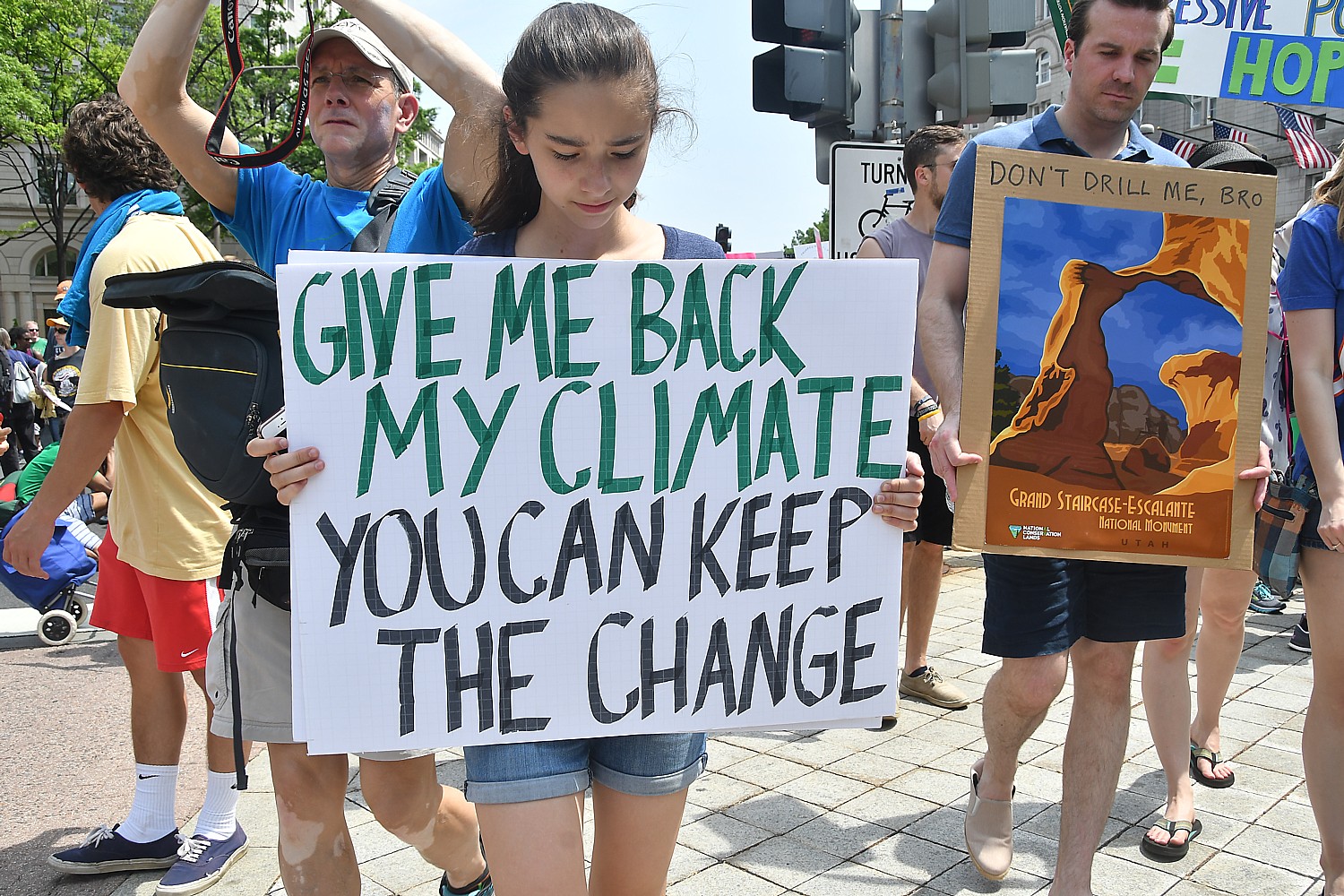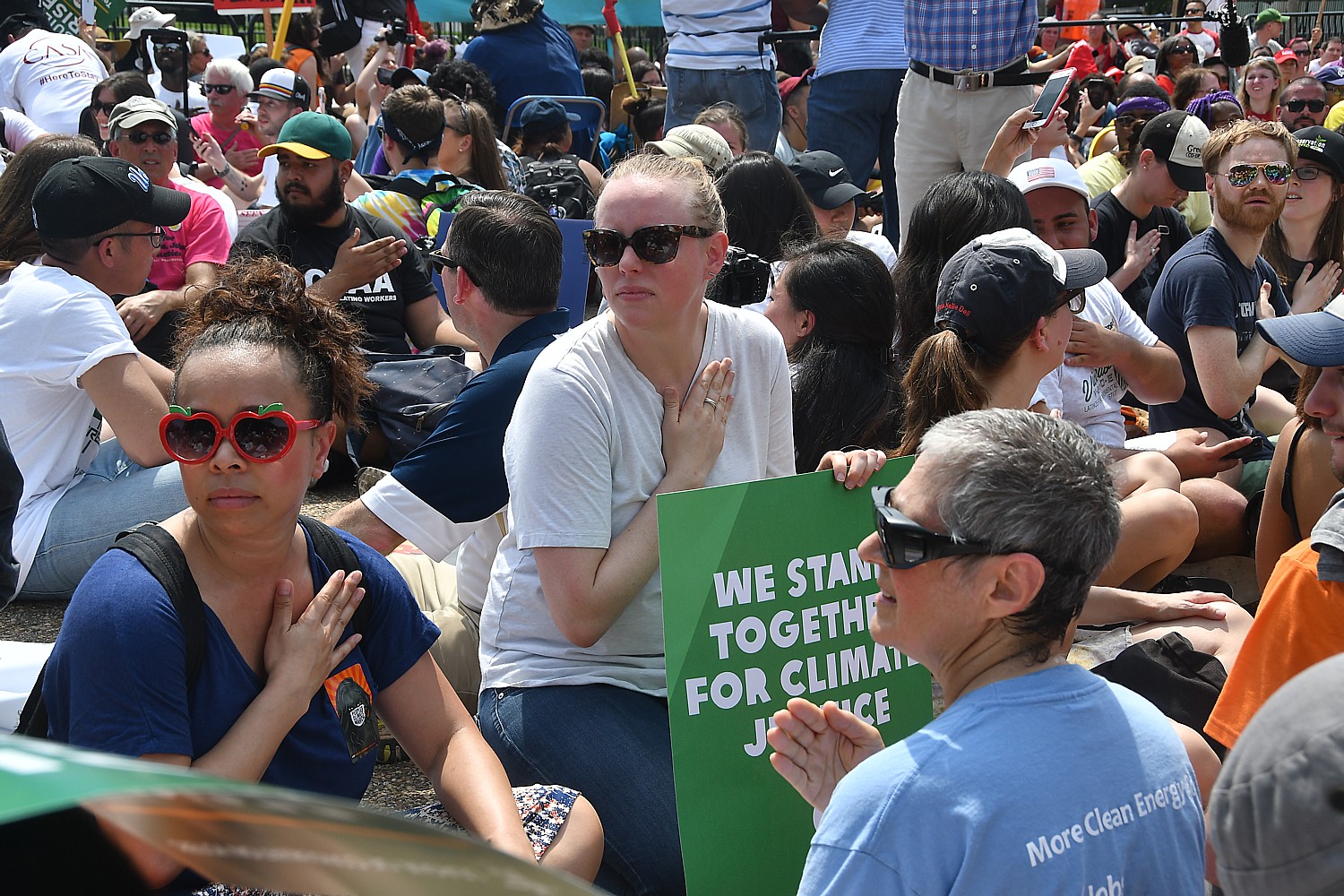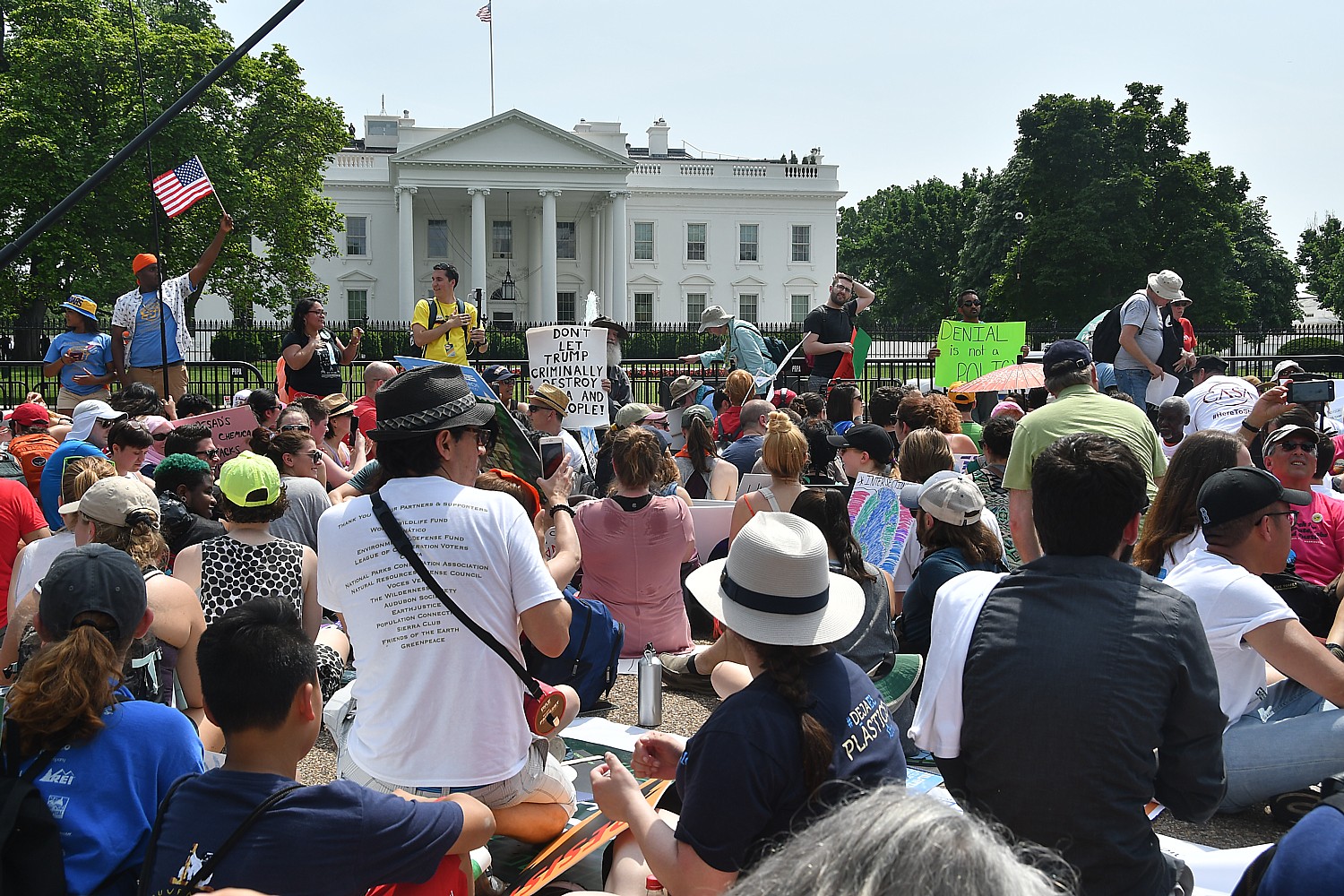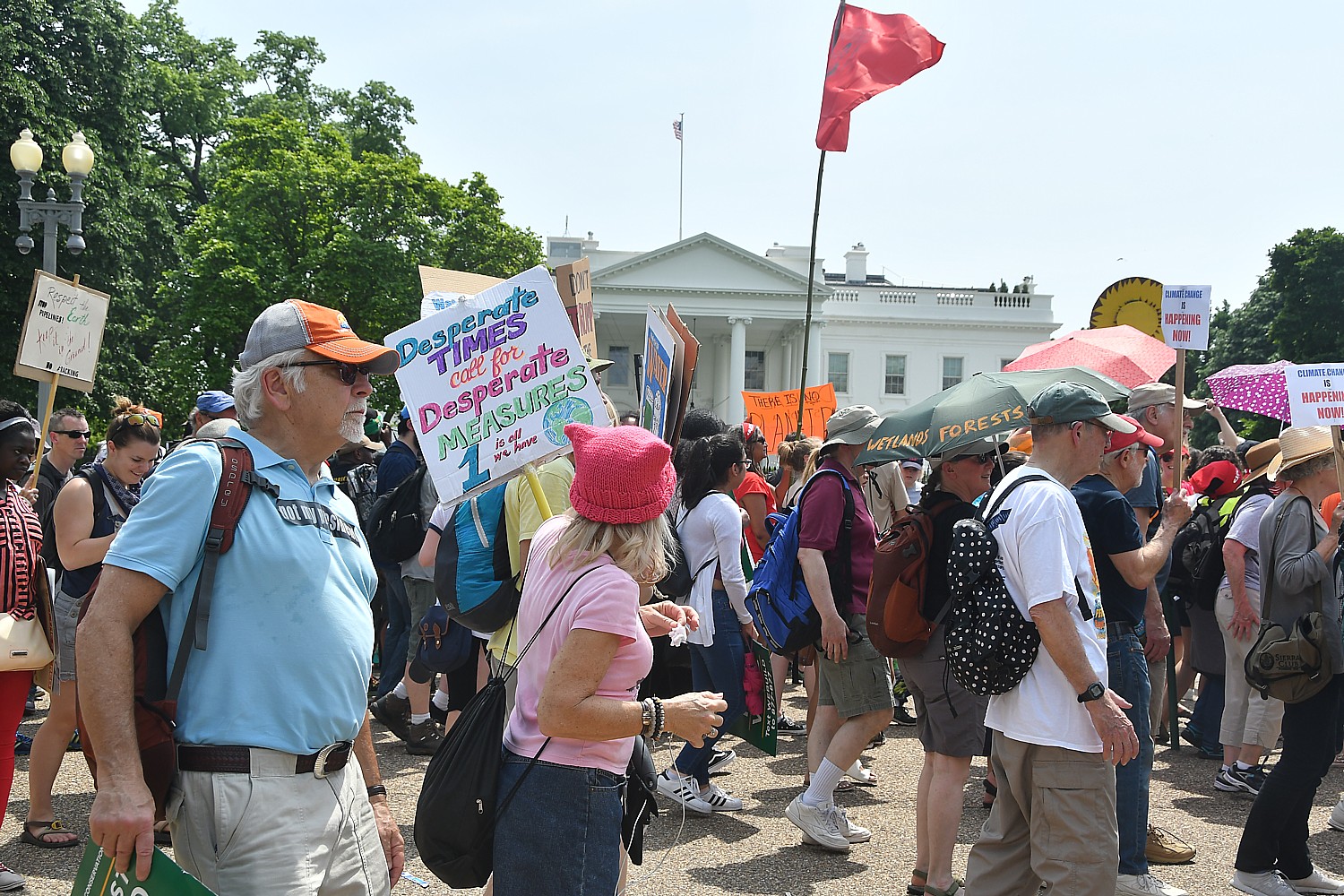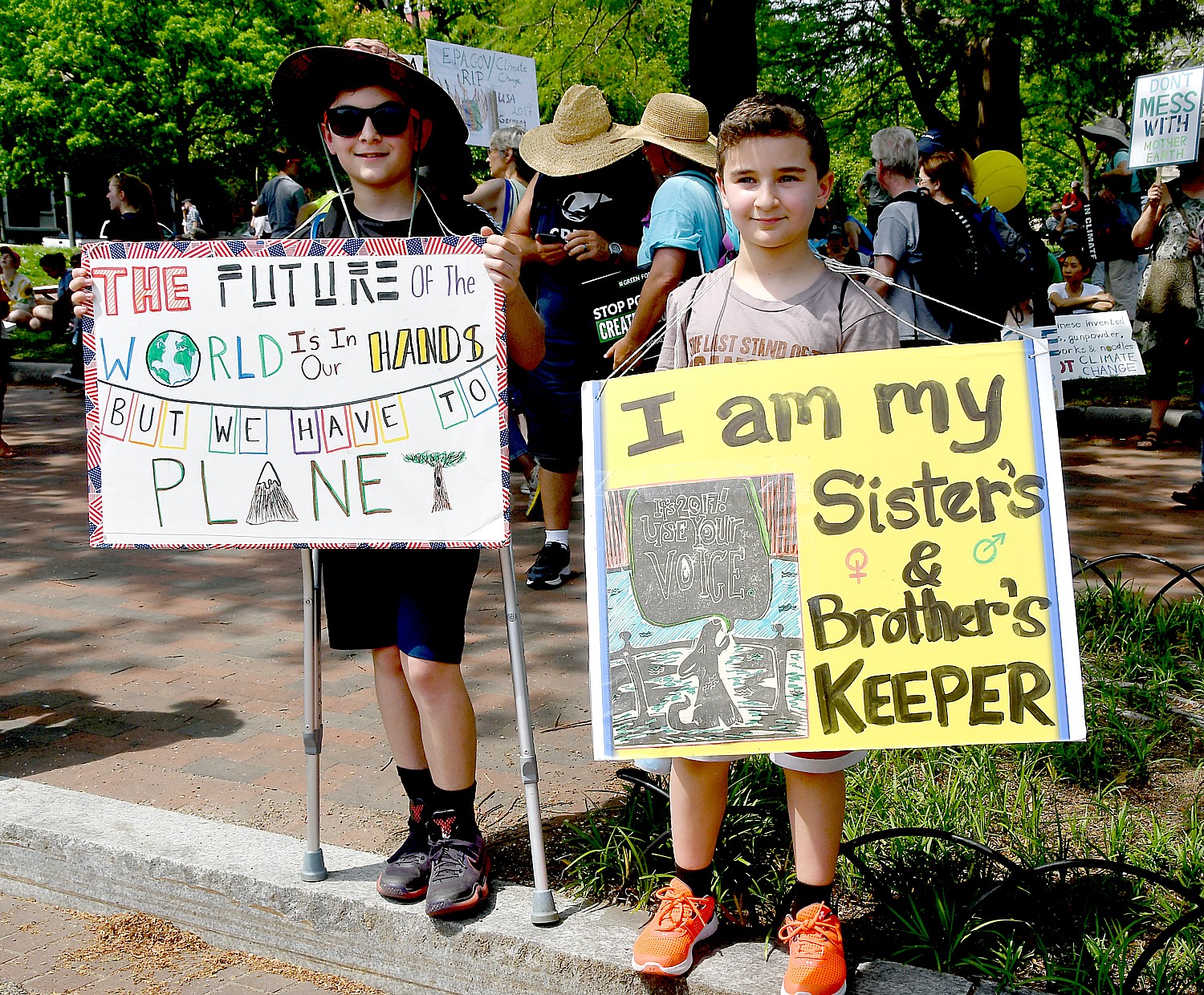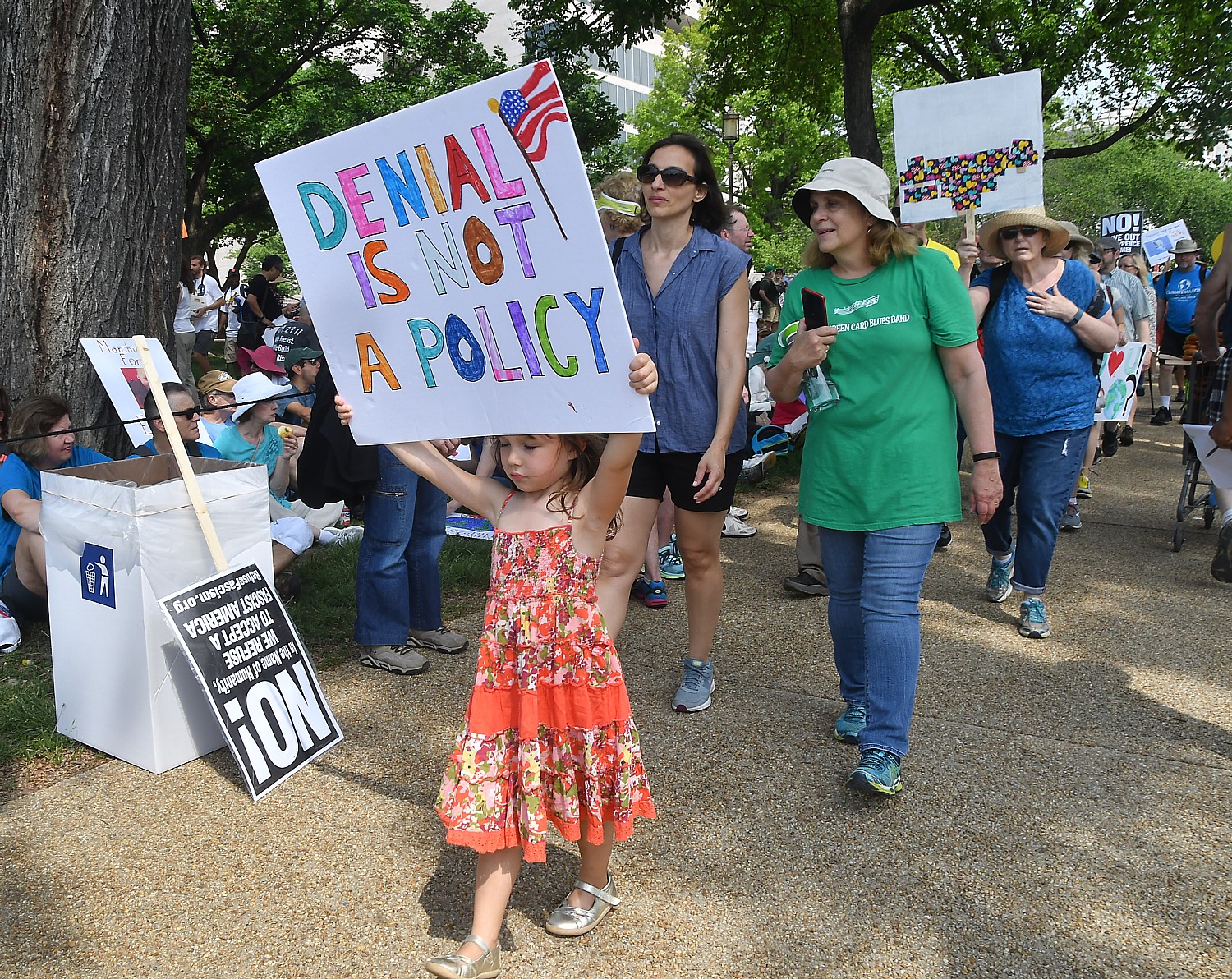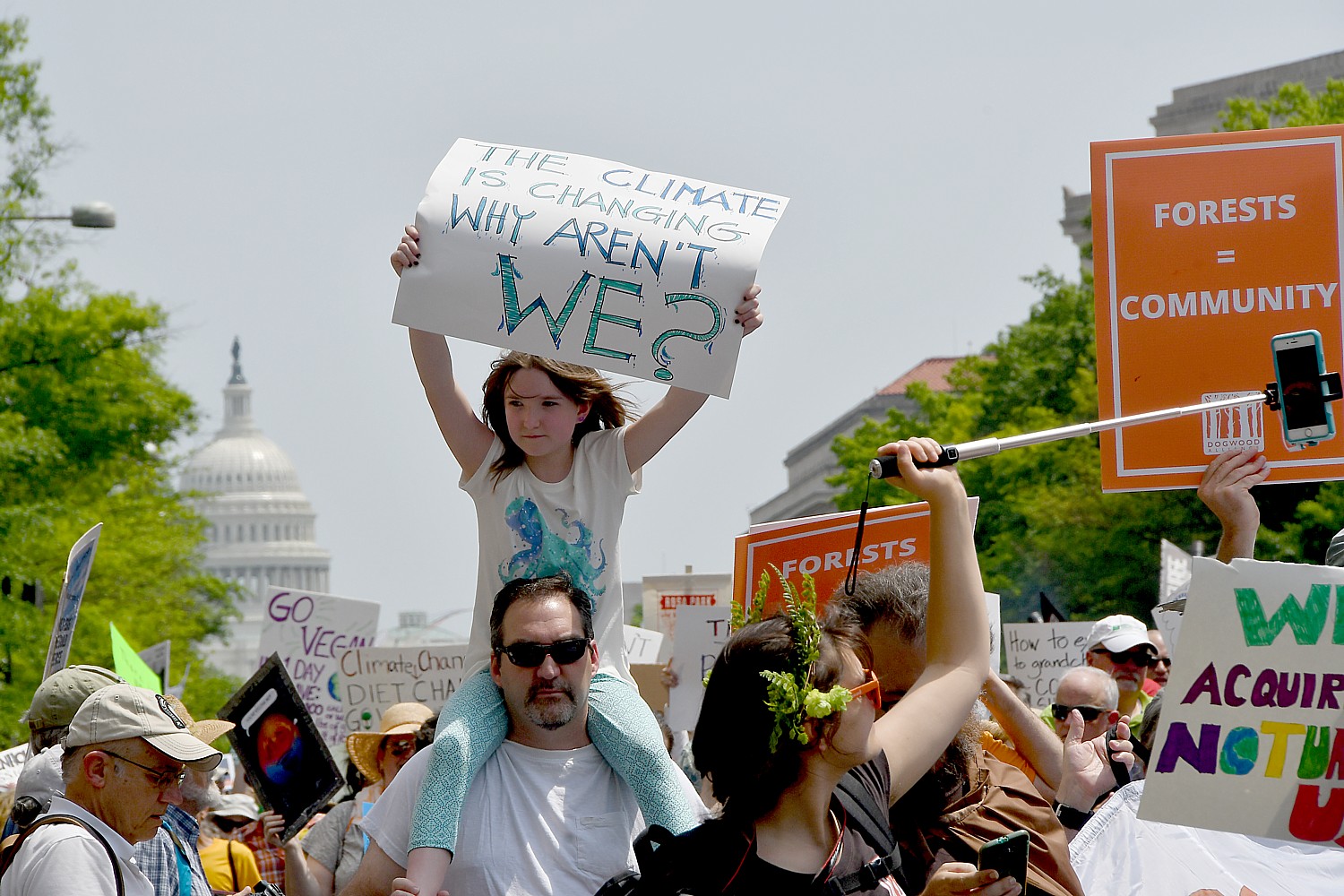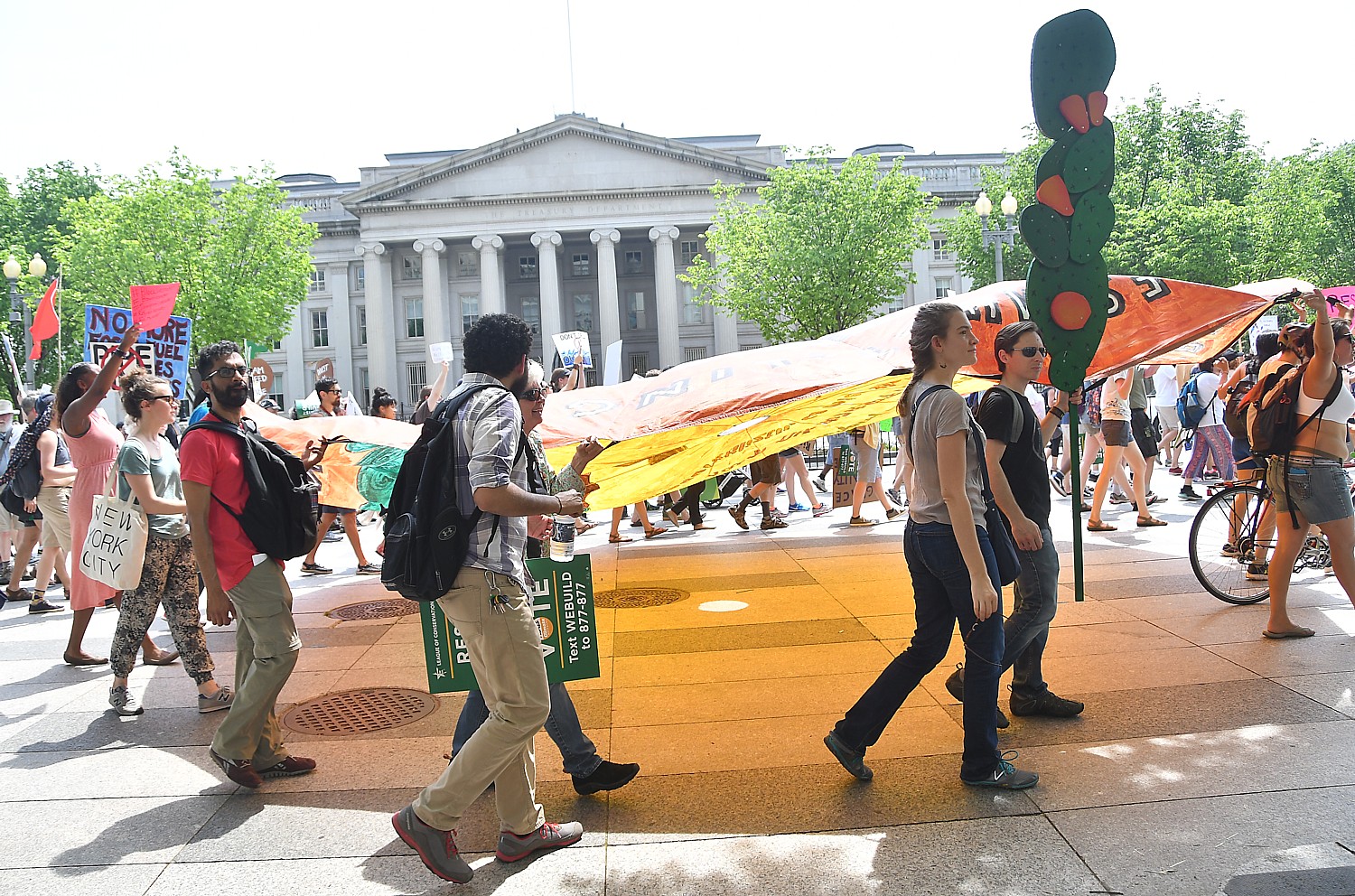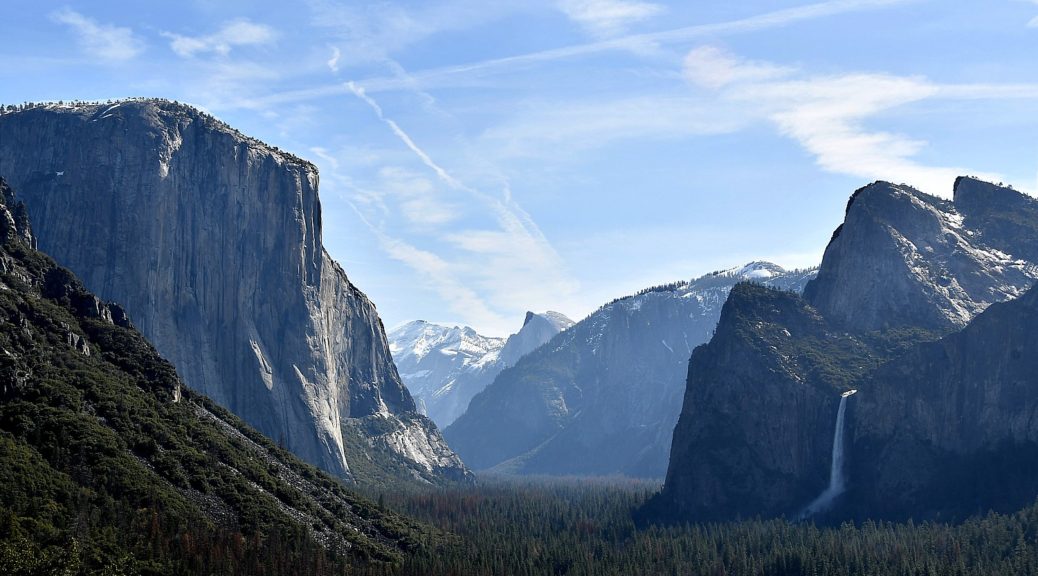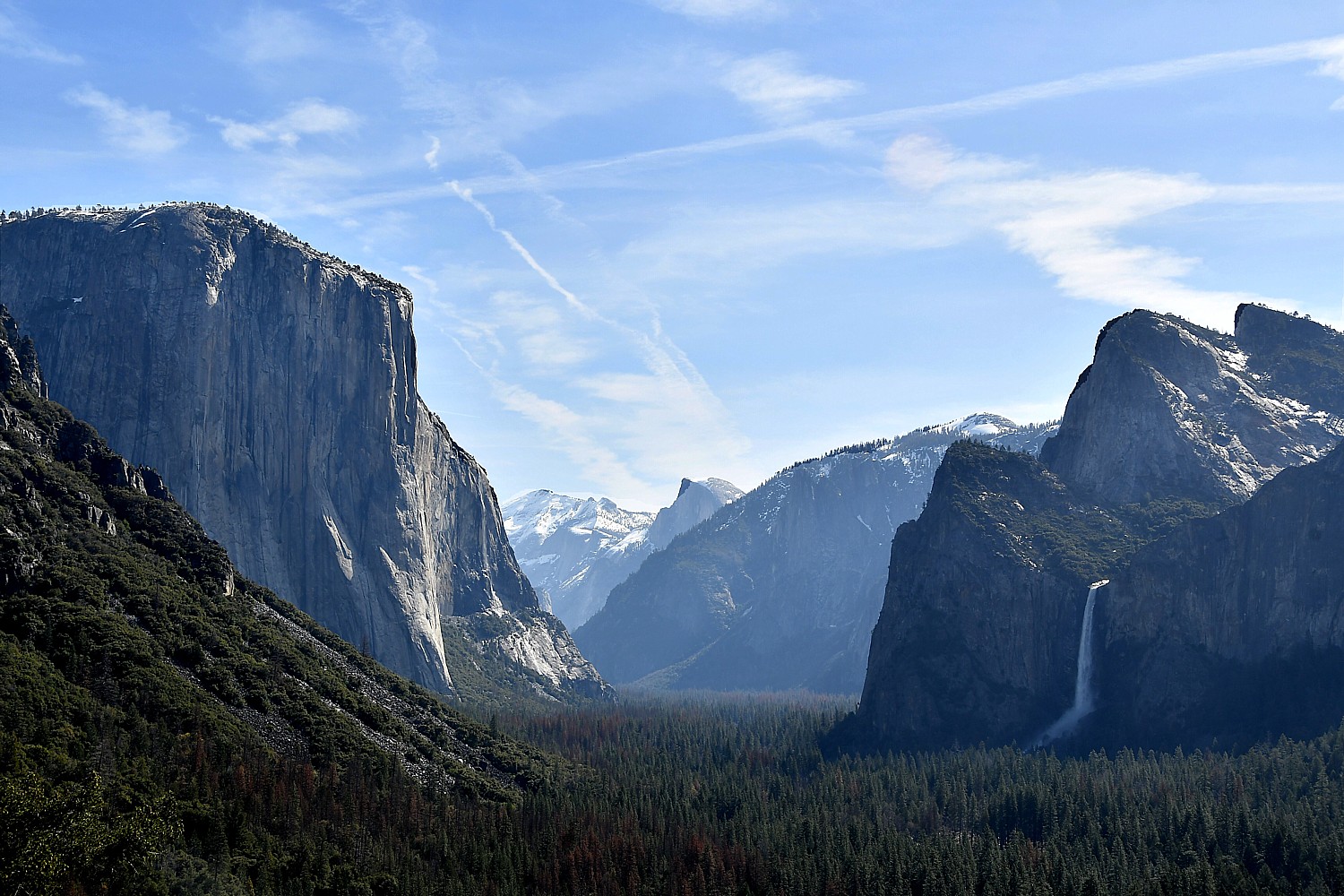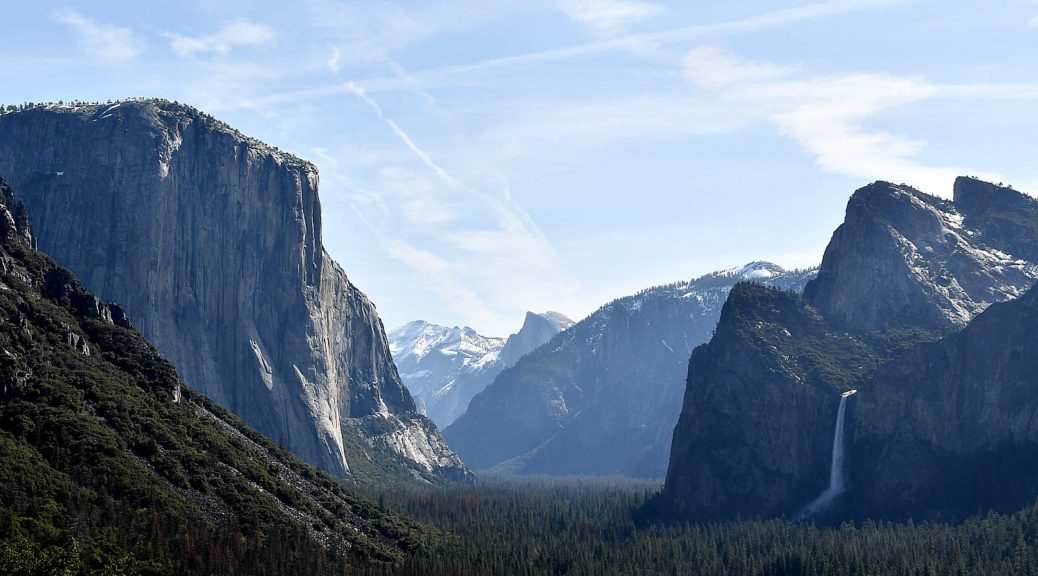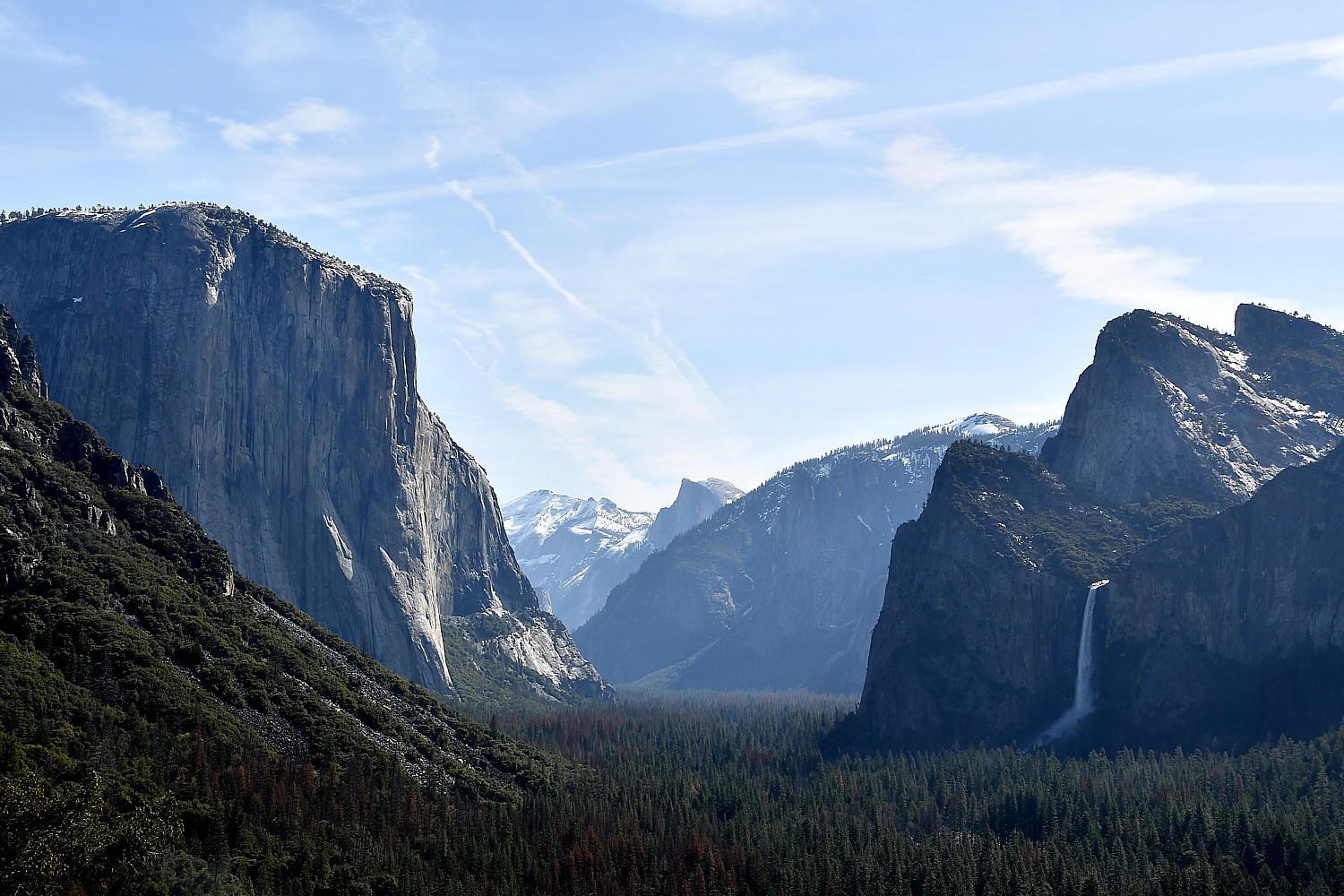
Each one a person of remarkable achievement, who lifted themselves up, sometimes from abject poverty; several were the first in their family to go to college, several were immigrants or children of immigrants, and one is a 35th generation Pueblo Indian, the first Native American to lead the Interior Department which historically ruled over Indian lands and routinely violated treaties. The nominees and appointees to key climate and environmental positions are the incarnation of President-Elect Joe Biden’s campaign promises, specifically, the first administration to elevating climate and environmental protection to this level and priority.
As Biden said, like his other cabinet picks, these climate, energy and environment nominees and appointees are brilliant, qualified and tested, and barrier-busting, precedent-breaking, historic, “a cabinet that looks like America, that taps into the best of America.”
The contrast to Trump, who declared climate change a “hoax” and whose priorities – to overturn the climate action and environmental protection initiatives of the Obama-Biden administration and elevate to top positions lobbyists and executives from gas, oil, and mining industries, people of privilege and wealth – could not be more stark.
Clean energy, resilient infrastructure, sustainable agriculture and development, are the building blocks to Biden’s “Build Back Better” plan that will employ millions in new jobs and enterprises and keep the United States competitive with the rest of the world. “When we think about climate change, we think jobs.”
Electric cars – incentivized with purchase for the federal fleet – will mean one million auto industry jobs; transforming the electricity sector to being carbon-free “will be the greatest spur to job creation and economic competitiveness in the 21st Century, not to mention the benefits to our health and our environment.”
He added, “And we are committed to facing climate change by delivering environmental justice.
“These aren’t pie-in-the-sky dreams. These are concrete, actionable solutions. And this team will get them done.”
Biden introduced his nominees:
Secretary of the Interior, Congresswoman Deb Haaland.
Secretary of Energy, former Michigan Governor Jennifer Granholm.
Administrator of the Environmental Protection Agency, Secretary of North Carolina’s Department of Environmental Quality Michael Regan
Chair of the Council on Environmental Quality, environmental lawyer Brenda Mallory
National Climate Advisor and head of the newly formed White House Office of Domestic Climate Policy, former EPA Administrator Gina McCarthy
Deputy National Climate Advisor, Ali Zaidi.
These nominees – as throughout Biden’s cabinet – are notable for their story and the values their background forged.
Here are their remarks, highlighted: –Karen Rubin/news-photos-features.com
Remarks by President-elect Joe Biden
Today I am pleased to announce the team that will lead my Administration’s ambitious plan to address an existential threat of our time — climate change.
Like their fellow-Cabinet nominees and appointments, members of our environment and energy team are brilliant, qualified and tested, and barrier-busting.
With today’s announcements there will be six African American members of our Cabinet.
A record.
After today, our Cabinet won’t just have one or two precedent-breaking appointments, but 12 —including today’s long-overdue appointment of the first Native American Cabinet Secretary.
Already there are more people of color in this Cabinet than any Cabinet ever. More women than ever.
The Biden-Harris Cabinet will be an historic Cabinet.
A Cabinet that looks like America.
That taps into the best of America.
That opens doors and includes the full range of talents we have in this nation.
And like the rest of the team, today’s nominees are ready on Day One, which is essential because we literally have no time to lose.
Just this year, wildfires burned more than 5 million acres in California, Washington, and across the West — an area roughly the size of the entire state of New Jersey.
Intense and powerful hurricanes and tropical storms pummeled Florida, Louisiana, North Carolina, and across the Gulf and along the East Coast.
Record floods, hurricane-speed windstorms, and severe droughts ravaged the Midwest.
And more Americans see and feel the devastation in big cities and small towns, on coastlines and farmlands, in red states and blue states.
Billions of dollars in damage. Homes and memories washed away. Small businesses closed up for good. Crops and farmlands destroyed for the next generation family farmer.
Just last year, the Defense Department reported that climate change is a direct threat to more than two-thirds of the military’s operationally critical installations. And this could well be a conservative estimate.
And so many climate and health calamities are colliding at once.
It’s not just a pandemic that keeps people inside — it’s poor air quality.
Multiple studies have shown air pollution is associated with an increased risk of death from Covid-19.
Folks, we’re in a crisis.
Just like we need a unified national response to COVID-19, we need a unified national response to climate change.
We need to meet this moment with the urgency it demands as we would during any national emergency.
And from the crisis, we need to seize the opportunity to build back better than we were before.
That’s what this Administration will do.
When we think about climate change, we think “jobs.” Good-paying union jobs.
A key plank of our Build Back Better economic plan is building a modern, climate-resilient infrastructure and clean energy future.
We can put millions of Americans to work modernizing water, transportation, and energy infrastructure to withstand the impacts of extreme weather.
When we think about renewable energy, we see American manufacturing, American workers, racing to lead the global market.
We see farmers making American agriculture first in the world to achieve net-zero emissions and gaining new sources of income in the process.
We see the small businesses and master electricians designing and installing innovative, energy-conserving buildings and homes. This will reduce electricity consumption and save hundreds of thousands of dollars a year in energy costs.
And we will challenge everyone to step up.
We will bring America back into the Paris Agreement and put us back in the business of leading the world on climate change.
The current Administration reversed the Obama-Biden fuel-efficiency standards and picked Big Oil companies over the American workers. Our Administration will not only bring those standards back — we will set new, ambitious ones that our workers are ready to meet.
We see American workers building and installing 500,000 electric vehicle charging stations across the country.
We see American consumers switching to electric vehicles through rebates and incentives.
Not only that — the federal government owns and maintains an enormous fleet of vehicles.
And we’re going to harness the purchasing power of our federal government to make sure we are buying clean, electric vehicles that are made and sourced by union workers right here in America.
All together, this will mean one million new jobs in the American auto industry.
And we’ll do another big thing: put us on a path of achieving a carbon-pollution-free electricity sector by 2035 that no future president can turn back.
Transforming the American electricity sector to produce power without carbon pollution will be the greatest spur to job creation and economic competitiveness in the 21st Century, not to mention the benefits to our health and our environment.
But we need to get to work right away.
We’ll need scientists at national labs, land-grant universities, and Historically Black Colleges and Universities to innovate the technologies needed to generate, store, and transmit this clean electricity.
We’ll need engineers to design them and workers to manufacture them.
We’ll need ironworkers and welders to install them.
That’s how we’ll become the world’s largest exporter of these technologies, creating even more jobs.
We know how to do this.
The Obama-Biden Administration rescued the auto industry and helped them retool.
We made solar energy cost-competitive with traditional energy and weatherized more than a million homes.
The Recovery Act made record clean energy investments — $90 Billion — on everything from smart grid systems to clean energy manufacturing.
We will do it again — bigger, and faster, and better than before.
We’ll also build 1.5 million new energy-efficient homes and public housing units that will benefit our communities three-times over by alleviating the affordable housing crisis, by increasing energy efficiency, and by reducing the racial wealth gap linked to homeownership.
We’ll create more than a quarter-million jobs right away, to do things like working toward plugging the 3.2 million abandoned oil and gas wells that the EPA says pose an ongoing threat to the health and safety of our communities.
We’ll launch a new, modern-day Civilian Climate Corps to heal our public lands and make us less vulnerable to wildfires and floods.
And I believe that every American has a fundamental right to breathe clean air and drink clean water.
But I know that we haven’t fulfilled that right. No, we haven’t fulfilled that right for a generation or more in places like Cancer Alley in Louisiana or along the Route 9 corridor right here in Delaware.
Fulfilling this basic obligation to all Americans, especially in low-income white, Black, Brown, and Native American communities who too often don’t have clean air and clean water is not going to be easy.
But it is necessary. And we are committed to facing climate change by delivering environmental justice.
These aren’t pie-in-the-sky dreams. These are concrete, actionable solutions.
And this team will get them done.
For Secretary of the Interior, I nominate Congresswoman Deb Haaland.
She’s of the Pueblo people. A 35th-generation New Mexican.
She’s from a military family. Her mom, also Pueblo, served in the United States Navy. Her dad, Norwegian American, a Marine now buried in Arlington.
A single mom, she raised her child while running a small business.
When times were tough, they relied on food stamps.
Congresswoman Haaland graduated from law school and got involved in politics.
Two years ago, she became one of the first Native American women to serve in Congress.
She serves on the Armed Services Committee, and Committee on Natural Resources, and Chairs the Subcommittee on National Parks, Forests, and Public Lands, where she’s earned the respect
of a broad coalition of people — from tribal leaders to environmental groups to labor.
As the first Native American Cabinet Secretary in the history of the United States of America, she will be a true steward of our national parks, natural resources, and all of our lands.
The federal government has long broken promises to Native American tribes who have been on this land since time immemorial.
With her appointment, Congresswoman Haaland will help me strengthen the nation-to-nation relationship, and I am honored she accepted this critical role.
For Secretary of Energy, I nominate Jennifer Granholm.
The first woman to ever serve as Governor of Michigan.
In 2009, she faced the collapse of a defining industry of her state and our nation.
But I saw firsthand how she responded. She bet on the autoworkers. She bet on the promise of a clean energy future.
Her leadership helped rescue the American auto industry, helped save one million American jobs, and helped bring Detroit back.
Governor Granholm is just like the state she led so effectively for eight years: hard-working, resilient, and forward-thinking.
Someone not only capable of solving urgent problems, but someone who sees the opportunities of the future always with her eyes on the needs and aspirations of working people.
Throughout her career, she’s worked with states, cities, business, and labor to promote a clean energy future with new jobs, new industries, cleaner and more affordable energy.
Now, I’m asking her to bring that vision and faith in America to the Department of Energy.
For Administrator of the Environmental Protection Agency, I nominate Michael Regan.
A proud son of North Carolina, he turned a passion for exploring the woods and waters of the Inner Coastal Plain into a deep expertise in environmental science.
He got his start at the EPA serving in both Democratic and Republican Administrations, working on everything from reducing air pollution to improving energy efficiency.
He currently serves as Secretary of North Carolina’s Department of Environmental Quality,
where he’s brought people together across the public, private, and nonprofit sectors to help build a new clean energy economy, creating quality jobs, and confronting climate change.
He led the charge to clean up the Cape Fear River, contaminated for years by dangerous toxic chemicals.
And he created North Carolina’s first board of its kind to address environmental justice and equity.
It helps lift up frontline and fenceline communities who had carried the burdens of industrial progress for too long, without sharing in the benefits.
Michael would be the second African American official and first African American man to serve in this position.
He shares my belief in forging consensus and finding common purpose.
He is the leader who will reassert the EPA’s place as the world’s premier environmental protection agency that safeguards our planet, protects our lives, and strengthens our economy for all Americans.
For Chair of the Council on Environmental Quality, I nominate Brenda Mallory.
An accomplished public servant. A brilliant environmental lawyer.
A daughter of a working-class family who has dedicated her life to solving the most complex environmental challenges facing America.
She has served in both Democratic and Republican administrations, helping safeguard our public lands and helping communities manage their natural resources responsibly.
As Chair of CEQ, I’m asking her to coordinate our environmental efforts across the entire federal government to solve some of the most persistent environmental problems America faces today.
Brenda would be the first African American official to hold this critical position.
We are fortunate that one of the most widely respected environmental leaders in the country accepted the call to serve again.
To serve as the first-ever National Climate Advisor and lead the newly formed White House Office of Domestic Climate Policy, I appoint Gina McCarthy.
The fact I’ve asked a former EPA Administrator to take this role and lead this new office shows how serious I am.
Gina’s got more than 30 years of experience.
She’s a policy wonk and a people person.
A problem-solver and coalition builder.
As EPA Administrator, she was instrumental in carrying out the Obama-Biden Climate Action Plan.
Reducing greenhouse gas emissions. Getting toxins out of the air we breathe. Conserving critical water sources.
She led our effort to help lower carbon emissions of existing power plants and power plants of the future.
And by doing the necessary work here at home, she helped us rally the world around the Paris Climate Accords.
Today, I’m asking her to take a singular focus on carrying out our ambitious climate agenda
here at home, while my Special Envoy John Kerry leads our climate efforts around the world.
I’m grateful to work alongside her again.
And to serve as Deputy National Climate Advisor, I appoint Ali Zaidi.
He served as a top climate advisor to President Obama and me at the Office of Management and Budget and the Domestic Policy Council.
He helped draft and implement our Climate Action Plan and secure the Paris Climate Agreement.
He currently serves as New York’s Deputy Secretary of Energy and Environment and the State’s Chairman of Climate Policy and Finance.
He’s helping to create jobs generating solar and wind power, jobs building electric charging stations and a more modern grid, bold climate action grounded in science, economics, and public health.
And, he’s an immigrant from Pakistan who grew up in the Rust Belt, outside Erie, Pennsylvania.
Ali knows we can beat the climate crisis with jobs.
He knows we can deliver environmental justice and revitalize communities too often overlooked and forgotten.
And every day he’ll walk into the White House, knowing the world is looking for America to lead.
To each of you, thank you for answering the call to serve.
To your families, thank you.
We could not do this without you or them.
To the career civil servants at these agencies, we look forward to working with you to once again carry out your department’s mission with honor and integrity.
And to the American people — yes, the goals I’ve laid today are bold.
The challenges ahead are daunting.
But I want you to know that we can do this.
We must do this.
And we will do this.
We are America.
And there’s nothing we can’t do when we work together.
May God bless you all.
May God protect our troops.

Remarks by Nominee for Secretary of Interior, Deb Haaland
I’m proud to stand here — on the ancestral homelands of the Lenape Tribal Nation.
The president-elect and vice president-elect are committed to a diverse cabinet, and I’m honored and humbled to accept their nomination for Secretary of the Interior.
Growing up in my mother’s Pueblo household made me fierce. My life has not been easy — I struggled with homelessness, relied on food stamps, and raised my child as a single mom.
These struggles give me perspective to help people succeed.
My grandparents — who were taken away from their families as children and sent to boarding school, in an effort to destroy their traditions and identities — maintained our culture.
This moment is profound when we consider the fact that a former Secretary of the Interior once proclaimed it his goal to, quote, ‘civilize or exterminate’ us. I’m a living testament to the failure of that horrific ideology.
I also stand on the shoulders of my ancestors, and all the people who have sacrificed so that I can be here.
My dad was a US Marine, and no matter where we were stationed, he made sure we spent time outdoors.
Time with my dad in the mountains or on the beach and time with my grandparents in the cornfield at Laguna taught me to respect the Earth and to value our resources. I carry those values with me everywhere. I’m a product of their resilience.
As our country faces the impacts of climate change and environmental injustice, the Interior Department has a role to address these challenges.
The president-elect’s goals are driven by justice and empowering communities who have shouldered the burdens of environmental negligence.
And we will ensure that the decisions at Interior will once again be driven by science.
We know that climate change can only be solved with participation of every department and of every community coming together in common purpose — this country can and will tackle this challenge.
The president-elect and vice president-elect know that issues under Interior’s jurisdiction aren’t simply about conservation — they’re woven in with justice, good jobs, and closing the racial, wealth, and health gaps.
This historic moment will not go by without the acknowledgment of the many people who have believed in me over the years and had the confidence in me for this position.
I’ll be fierce for all of us, for our planet, and all of our protected land.
I am honored and ready to serve.
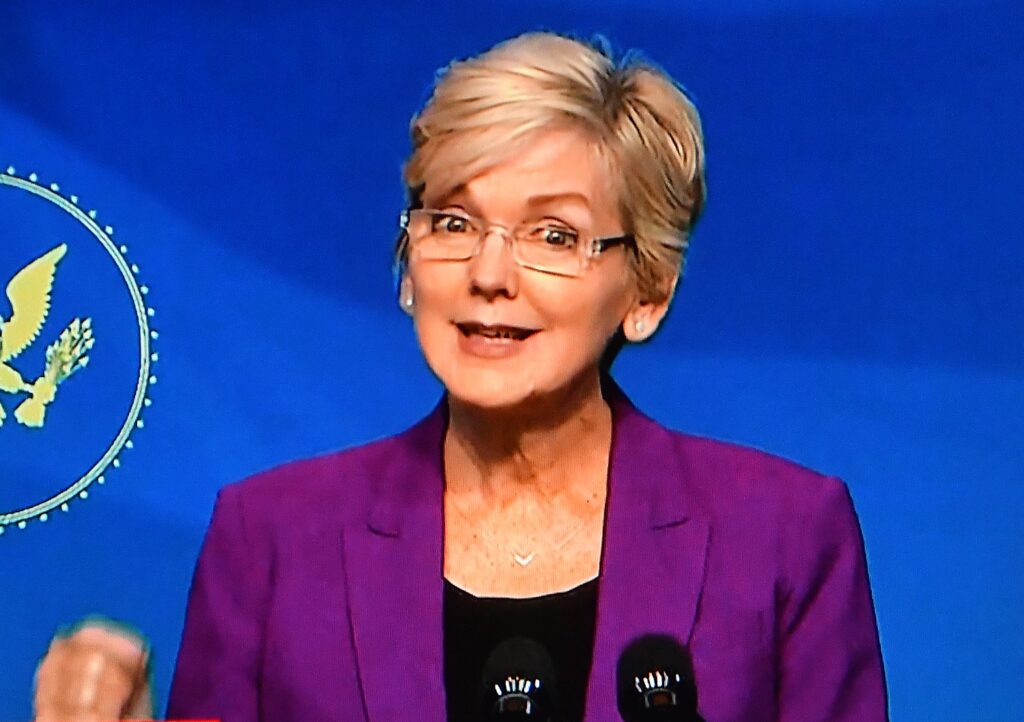
Remarks by Nominee for Secretary of Energy, Jennifer Granholm
Mr. President-elect, Madam Vice President-elect — thank you for your confidence.
I bring my gratitude, and that of the loves of my life: My best friend and husband Dan Mulhern, my glorious children and their equally magnificent spouses — Connor and Alexis, Cece and Damián, and Jack.
My commitment to clean energy was forged in the fire.
I was the Governor of Michigan when the Great Recession struck, pushing the auto industry — the lifeblood of our state — to the brink of collapse.
Workers were losing their jobs through no fault of their own.
Banks wouldn’t lend; families lost their homes; our unemployment rate shot up to 15 percent.
But then, thankfully, as now, “help was on the way.”
Joe Biden and the Obama administration worked with us to rescue the auto industry, save a million jobs, retool and electrify Detroit for the future, and diversify Michigan’s economy on the strength of a new sector: clean energy.
Today, in the midst of another harrowing crisis, clean energy remains one of the most promising economic growth sectors in the world.
Over the next two decades, countries will invest trillions of dollars in electric cars, solar panels, wind turbines, and energy-efficient appliances and buildings.
They’ll upgrade their electric grids using smart technology.
Millions of good-paying jobs will be created — but where will those jobs be?
In China, or other countries fighting tooth-and-nail to corner the clean energy market? Or here in America?
The path to building back better starts with building and deploying those products here, stamping them Made in America, and exporting them around the world.
We can win those jobs for American workers.
I know what those jobs will mean for families.
Though I’m proud to have been a U.S. citizen for 40 years, I arrived here as a Canadian immigrant at age four, brought by parents seeking opportunity.
My mom is a funny and fierce Irish/Welsh “Newfie” from Newfoundland, Canada — an island fishing province they call “The Rock.”
Like many women in her generation, she never went to college.
My dad died earlier this year of a cerebral hemorrhage.
He was born into extreme poverty, in a cabin in rural Canada with no running water.
My grandfather had immigrated from Sweden during the depression; unable to find a job to provide for his young family, he shot himself in desperation when my dad was three years old.
My grandmother became a single mom, with three young children, living in dire poverty.
My dad found work at a sawmill at 11. And after he married my mom, they came to America for better jobs.
Despite not having a college degree, my hard-working, gentle dad got the fair chance he was looking for in America — he started out as a bank teller, and retired as head of the bank.
It is because of my family’s journey — and my experience fighting for hardworking Michigan families — that I have become obsessed.
Obsessed with creating good-paying jobs in America — obsessed with seizing the opportunities of a clean energy future.
We can let other countries beat us to those opportunities, or we can get in the game.
I’m so ready, and honored, Coach, that you are putting me on the field with this amazing team — to help create those jobs in every pocket of this country, and especially in the hardest-hit places, for the people still waiting on the fair chance they need.
Thank you for tapping me to work on their behalf.
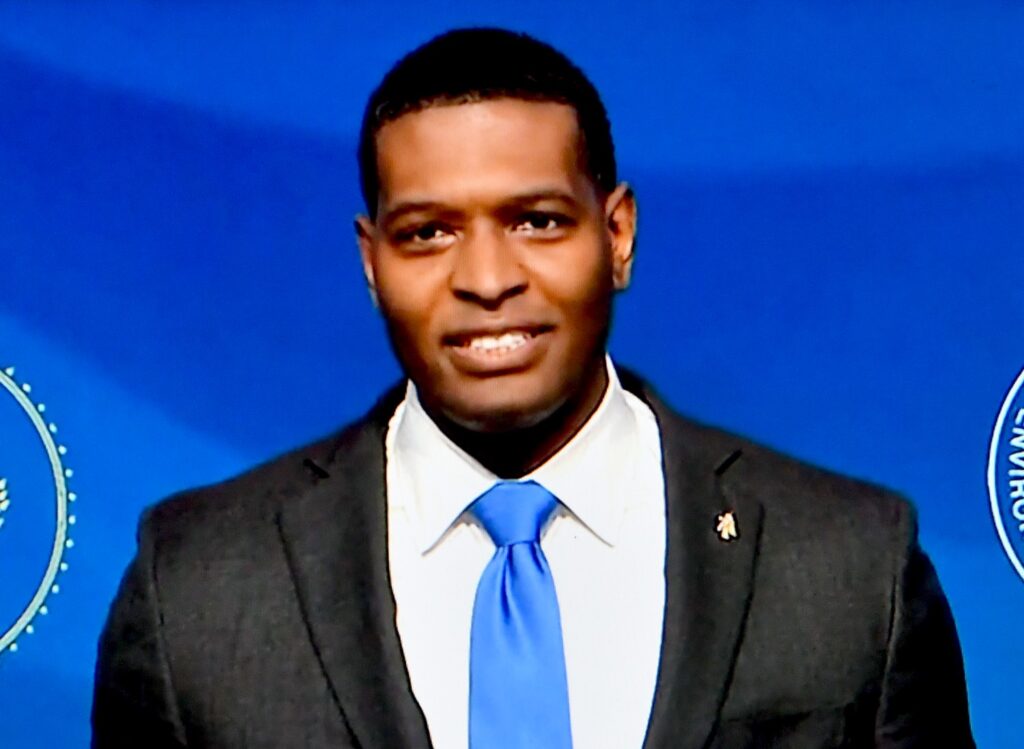
Remarks by Nominee for Administrator of the EPA, Michael Regan
Mr. President-elect, Madam Vice President-elect: Thank you for this opportunity.
Growing up as a child, hunting and fishing with my father and grandfather in eastern North Carolina — I developed a deep love and respect for the outdoors and our natural resources.
But I also experienced respiratory issues that required me to use an inhaler on days when pollutants and allergens were especially bad.
I’ve always been curious about the connections between our environment and our health — how the world around us contributes to, or detracts from, our enjoyment of life.
So after completing my education in environmental science, there was one place in particular I wanted to work: the EPA.
When I started that first summer internship, I never imagined I would one day be nominated to lead the agency as its Administrator.
So this opportunity is a dream come true.
Since the start of my career, my goals have been the same: To safeguard our natural resources; to improve the quality of our air and water; to protect families and communities and help them seize the opportunities of a cleaner, healthier world.
Now, I’m honored to pursue those goals alongside leaders who understand what’s at stake.
When President-elect Biden called out the plight of fenceline communities during the campaign, he made it clear that we would no longer just deal with issues up to the fencelines of facilities — we would actually see the people on the other side of those fences.
He has already backed up that commitment by assembling a team that reflects America — and I’m proud to join the vice president-elect as a fellow HBCU graduate in this administration.
Together, this team will ensure that environmental justice and human impacts are top of mind as we tackle the tough issues.
After nearly a decade at the EPA, I know firsthand the remarkable dedication and talent of the career staff.
And as a state official, I understand how the actions of the EPA can help or hurt local efforts.
We are going to ensure that the EPA is once again a strong partner for the states — not a roadblock.
We will be driven by our conviction that every person in our great country has the right to clean air, clean water, and a healthier life no matter how much money they have in their pocket, the color of their skin, or what community they live in.
We will move with urgency on climate change, protecting our drinking water, and enacting an environmental justice framework that empowers people in all communities.
But we also know that these challenges can’t be solved by regulation alone.
And we know that environmental protection and economic prosperity are not mutually exclusive — they go hand in hand.
We need an all-hands-on-deck approach from industry to individuals, finding common ground to build back better for workers, for communities, for our economy, and for our planet.
And that’s what we’ll pursue together.
I look forward to continuing that work on behalf of the American people.
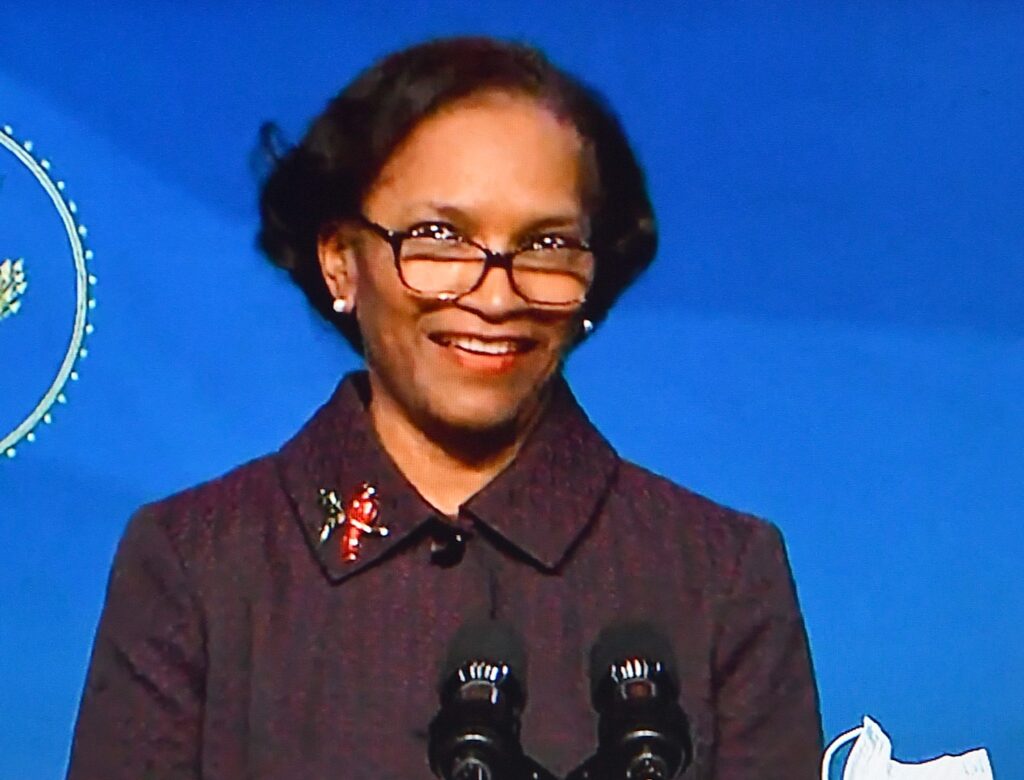
Remarks by Appointee for Chair of the Council on Environmental Quality, Brenda Mallory
Mr. President-elect — Madam Vice President-elect —I am honored and humbled by the trust you’ve placed in me, and I look forward to getting to work with this incredible team.
I am especially grateful for this chance to return to public service at a time when agency personnel are looking for optimism, and so many communities are struggling under the weight of persistent and interwoven crises.
I know first-hand the challenges that everyday people face when one unexpected illness or expense can upend the economic stability of a family.
I grew up in the working-class community of Waterbury, Connecticut — a town not so different from Scranton, Pennsylvania.
I know the faces of the marginalized, and I appreciate the challenges of urban pollution.
While the words climate change and environmental injustice were not part of my vernacular back then, the evidence of their impacts was all around.
In that setting, there was plenty of opportunity to work to make a difference in people’s lives.
For my parents, and particularly my father, dedication to tackling community challenges was vitally important.
Service, in all its forms, was essential.
They taught me to be a problem-solver — to recognize that each of us is blessed with different talents, and we are called to bring those gifts to bear wherever we are to work with anyone and everyone to make things better in the communities we share.
This has been a driving force and a guiding principle on my journey.
I earned a high school scholarship that changed the course of my life.
I became the first in my family to go to college, I attended law school, and at each stage, I was aware of how different the world I came from was from the one I was entering.
I didn’t set out to specialize in environmental issues, but once I started, I was always mindful of the practical implications of decisions.
As a staffer at the Connecticut Commission on Human Rights, I learned that environmental protection and ensuring the health and wellbeing of all communities had to be reconciled.
It is essential that we deploy smart and humane policy to help communities pull themselves back from the edge and improve the health, security, and prosperity of all their people.
The Build Back Better plan is poised to breathe new life into the Council on Environmental Quality.
CEQ will work with a broad range of partners on a broad range of issues, tackle the full breadth of climate change, preserve the natural treasures of our nation, center environmental justice, and help more communities overcome legacy environmental impacts.
I am grateful to the President-elect and the Vice President-elect for elevating this work and lifting up the communities where it will make a world of difference.
Thank you for this opportunity to serve.
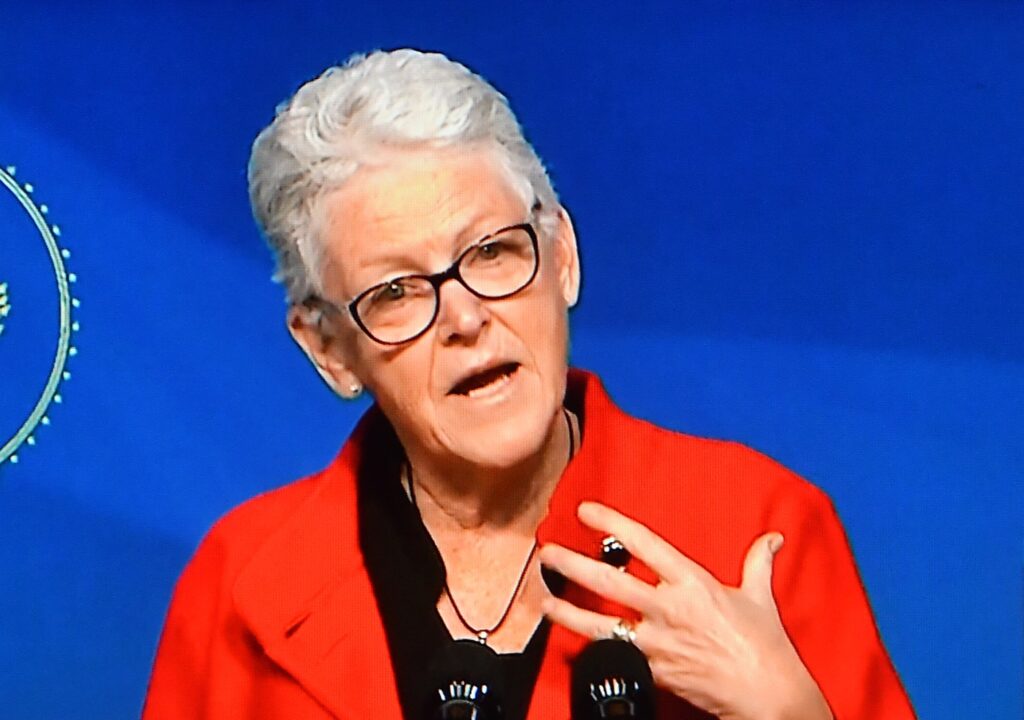
Remarks by Appointee for White House Climate Coordinator, Gina McCarthy
Mr. President-elect — Madam Vice President-elect—
Thank you for the opportunity to serve — and to work alongside this talented team.
The issues I’ll be taking on in this role are personal to me, and have been for as long as I can remember.
As keen listeners may have already guessed, I grew up in and around Boston.
My Dad was a teacher in the Boston Schools for more than 40 years; my Mom waitressed in local doughnut shops.
Looking back, I guess we were a lower-middle-class family. Instead of expensive vacations, my sisters and I did our adventuring in our backyard, playing in the woods and around ponds in our hometown.
A beach day for our family was a swim in Boston Harbor.
That meant coming out of the water with oil and other things stuck to our skin — so we’d have to dry and clean ourselves at the same time.
That was back in the 60s, before the first Earth Day — not the Boston Harbor of today.
I can remember jumping up to close the windows in my classroom when the chemical stench from the nearby rubber factory would start wafting in.
That smell kept us from outside recess on more days than I cared to remember.
So I figured out early on that there was a connection between our environment and our health.
And that understanding drew me into a long career of public service helping families and communities like mine, and those facing much steeper and more insidious legacies of environmental harm to overcome the challenges that were holding them back.
Environmental protection is part of my moral fiber.
And I am proud of the progress we’ve made and the work I did in local and state governments as well as at EPA to make air and water cleaner, make communities safer and more livable, and begin to confront climate change.
I’m here today because climate change isn’t only a threat to the planet — it’s a threat to the health and wellbeing of people, and the precious natural resources we depend on.
Defeating that threat is the fight of our lifetimes.
And our success will require the engagement of every community and every sector in our nation, and every country across our world.
But the opportunities to act on climate right now fill me with hope, energy, and excitement.
We not only have the responsibility to meet this moment together, we have the capacity to meet this moment together.
The President-elect has put together the strongest climate plan ever raised to this level of leadership.
It rises to this incredible moment of opportunity to build back better for our health, for jobs, and for communities that have been systemically disadvantaged for years.
It will be my honor to help turn this plan into promises kept by marshaling every part of our government, working directly with communities, and harnessing the forces of science — and the values of environmental justice — to build a better future for my two—soon to be three—little grandchildren, and for generations of Americans to come.
Thank you for this opportunity to help put Americans back to work in innovative, good-paying jobs to improve the health of our communities and to help clear the path for people in every hometown in America to live brighter, cleaner, more vibrant lives.
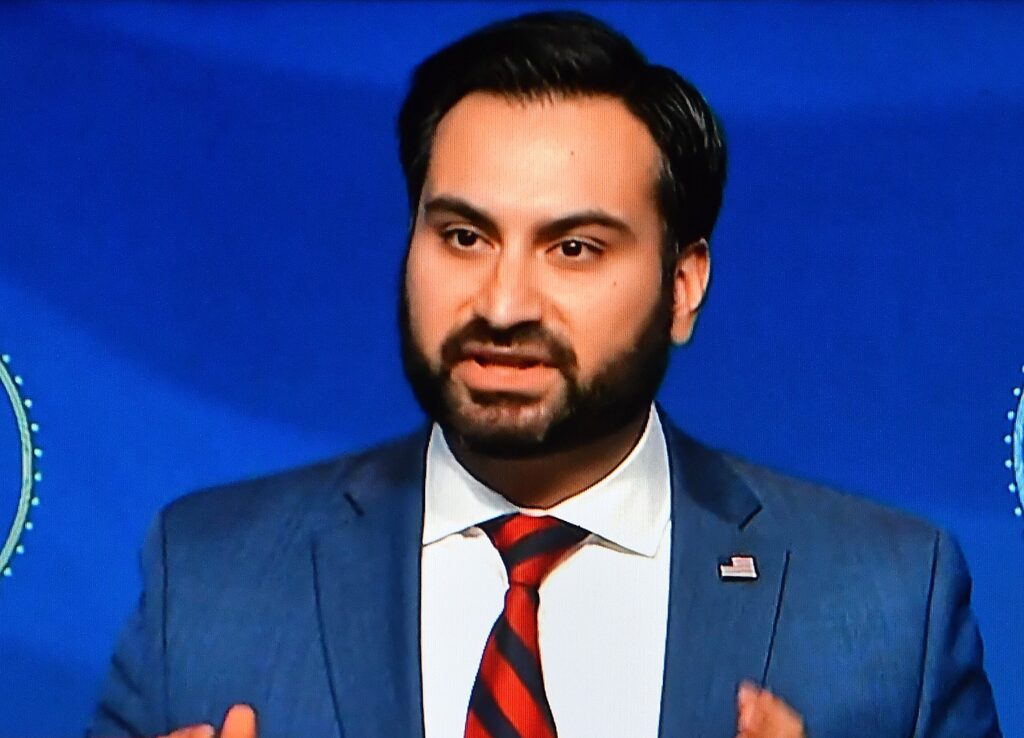
Remarks by Appointee for Deputy White House Climate Coordinator, Ali Zaidi
Thank you President-elect Biden and Vice President-elect Harris.
I am deeply honored to answer your call to serve this nation that I love, especially at this moment of consequence.
For our planet and the people who live here, the peril of the climate crisis is already evident.
But we can also see the promise in the jobs — casting and machining, installing and rewiring, pouring new foundations and building new industries.
And in the possibility of repairing communities hurt places where the pollution has been heavy, and opportunity has never quite reached.
Mr. President-elect & Madam Vice President-elect, you campaigned on delivering that promise by mounting a response equal to this existential threat, not only by listening to the science, but also by invigorating the economy. Revving up manufacturing and innovation, spurring good-paying union jobs and advancing justice — long overdue.
Leading by the example of America at its best.
When my parents moved from Pakistan to Pennsylvania, they brought two little kids — and a few suitcases of dreams.
Dreams their kids are living today:
Danish, my brother: a doctor on the frontlines of the COVID crisis, and me: moving to frontlines of the fight against climate change.
To be healthy, to have purpose, and to be able to give back — that is how our parents taught us to define the American Dream.
I am so grateful to be serving alongside the team you have assembled.
Grateful for Gina McCarthy, my guide and good friend, for the incredible and inspiring leaders on this stage, and for those with whom we’ll partner all across your administration.
This has been a trying year for all Americans — marked by so much loss. But throughout, you have been there for us.
And when the pandemic hit closer to home, you were there for me.
Mr. President-elect, that is who you are. A person of faith and family, decency and goodness.
Your leadership gives me hope.
My students, scientists imagining and inventing, give me hope
Young organizers, mobilizing and advocating, give me hope
And together, I know: We will meet this moment.
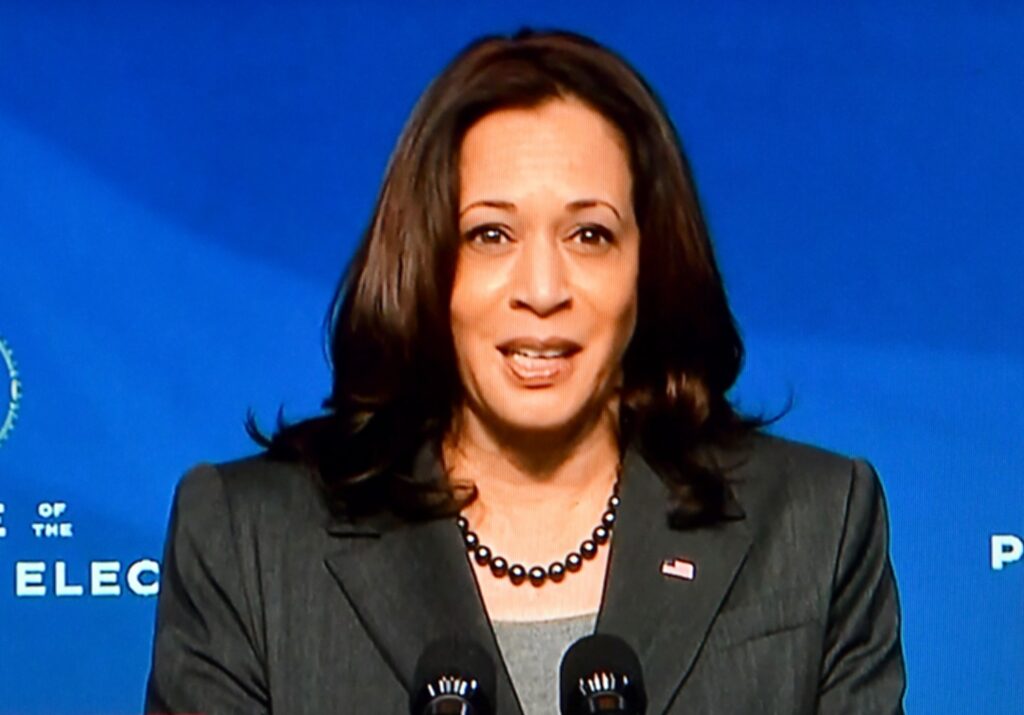
Remarks Vice President-elect Kamala Harris
A few months ago, as wildfires raged across the West, I traveled home to California.
What I saw on that trip — and so many others in recent years — was heartbreaking.
Charred playgrounds.
Homes and neighborhoods in ashes.
Firefighters battling fires, while their own homes burned to the ground.
Some of the most toxic air, anywhere in the world.
Two years ago, in 2018, when I visited communities like Paradise that had been devastated by wildfires, that year’s fire season was considered the worst in California’s history.
This fire season was even worse. The worst in California’s history — and America’s history.
And of course, fires are only one symptom of our growing climate crisis.
In recent years, families across the Midwest have experienced historic flooding, while families along our coasts have endured some of the most active hurricane seasons on record.
They only name a storm if it’s particularly dangerous. This year, we had more named storms than ever before.
Our climate crisis is not a partisan issue.
And it is not a hoax.
It is an existential threat to all of us, particularly poor communities and communities of color who bear the greatest risks from polluted air, polluted water, and a failing infrastructure.
Years ago, when I was District Attorney in San Francisco, I created the first environmental justice unit in the city — and one of the first in our country.
Because I believe that everyone has a right to breathe clean air and drink clean water.
So does the president-elect.
Part of the reason I was so proud to join him as his running mate was because he was proposing one of the most ambitious climate plans in history.
A plan to secure carbon-pollution free electricity by 2035.
A plan to achieve net-zero emissions no later than 2050.
A plan to invest in a clean energy future, and create millions of good-paying, union jobs, along the way.
And the team that President-elect Biden and I are announcing today will help make that plan a reality.
They are some of our country’s most seasoned public servants and climate experts.
They have experience mastering the most effective ways to get things done when it comes to climate change.
They recognize the importance of bringing the private sector and organized labor together with government to meet this challenge, and confront this crisis head-on with our allies and partners around the world.
And they are compassionate leaders who understand that, ultimately, addressing climate change is about building safer communities, and healthier communities, and thriving communities, for all Americans.
These public servants reflect the very best of America. And they are the team we need to meet this urgent challenge.
In his 2015 encyclical, the Holy Father Pope Francis wrote — quote: “Humanity still has the ability to work together in building our common home.”
Starting on January 20th, we will work to heed those words and come together, here in our country and around the world, to build and protect our common home for generations to come.
Thank you, Mr. President-elect.

